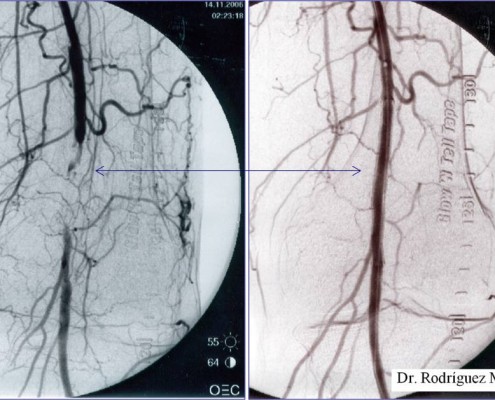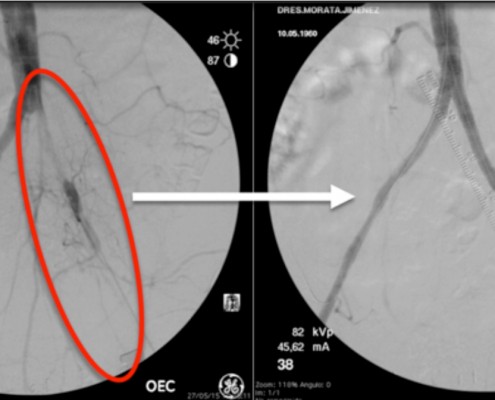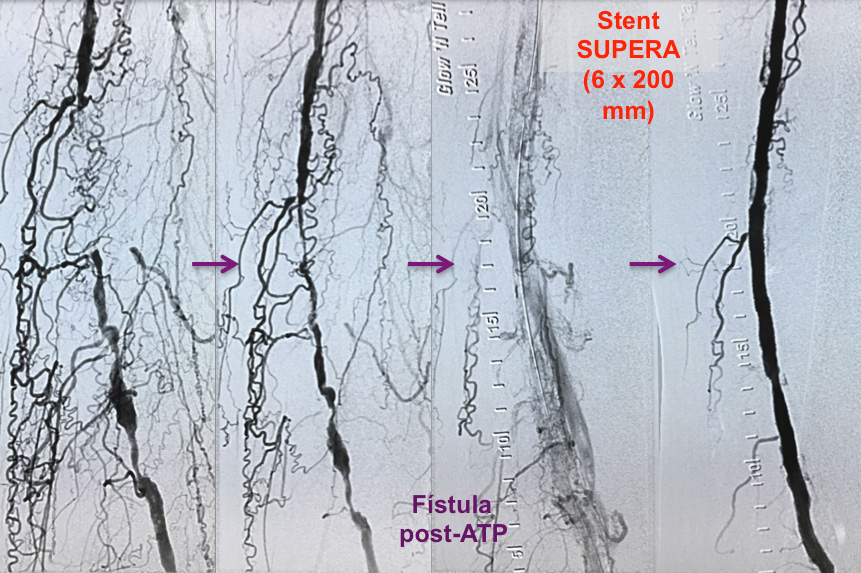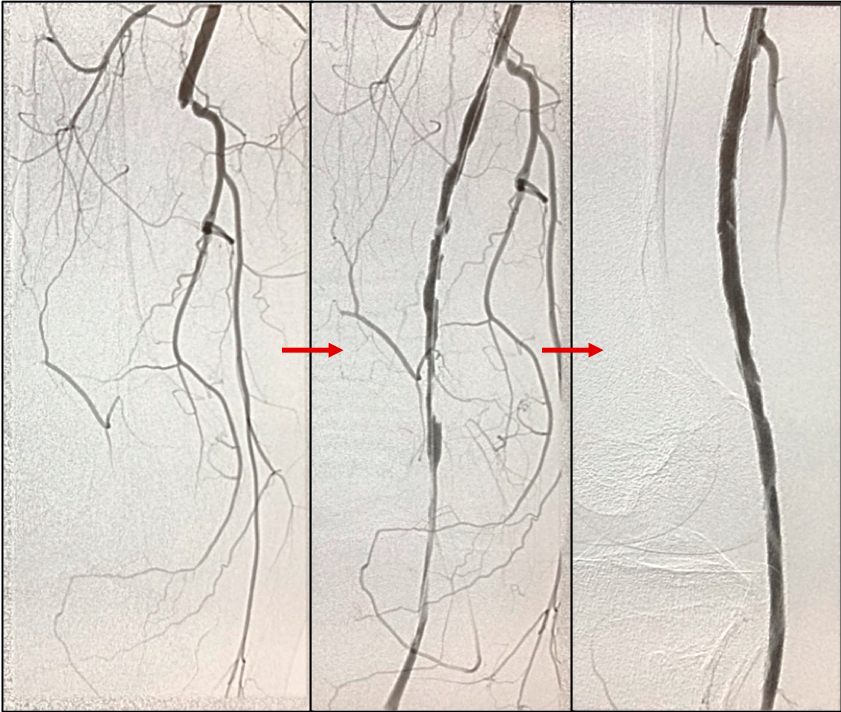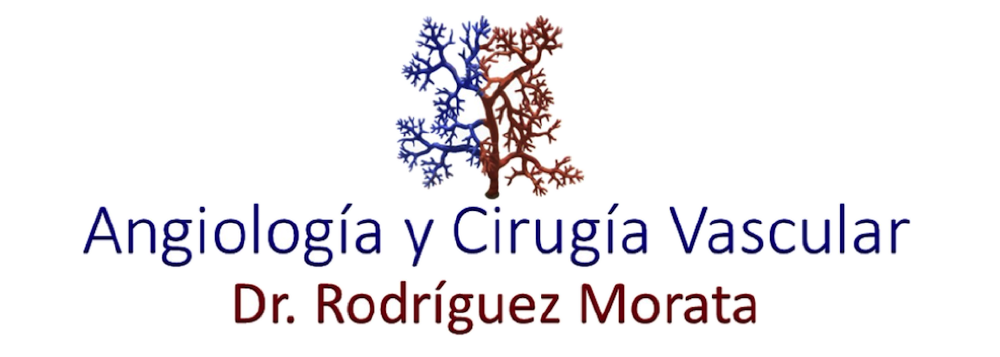This website uses cookies so that we can provide you with the best user experience possible. Cookie information is stored in your browser and performs functions such as recognising you when you return to our website and helping our team to understand which sections of the website you find most interesting and useful.
ARTERIAL LIMB ISCHEMIA
SUPERA Stent for Calcified Arteries
Aortic Endoprosthesis in Leriche Syndrome
Urgent Thrombolysis (fibrinolysis) with Angiojet in stent thrombosis
DESCRIPTION
WHAT IS ISCHEMIA?
Is what occurs in the body when blood stops arriving total or partially from the arteries to an organ or limb.
It can develop in acute form or chronic form, progressively over the months or years.
Why can ISCHEMIA occur?
Atherosclerosis Obliterans is the disease responsible of chronic arterial ischemia. It is a common disease in elderly adults. Up to 60% of the people older than 60 years of age may have some degree of it.
Atherosclerosis may affect any artery of the body. When it affects the aorta and its peripheral branches heading to the legs, we call it Peripheral Arterial Disease or Chronic Arterial Ischemia as well and its most severe manifestation is necrosis or gangrene. Up to 6% of the people of more than 60 years of age may have some peripheral arterial degree of affectation.
Atherosclerosis Obliterans develops as premature aging of the arterial walls and the occurrence of atheromatous injuries in them, which progressively grow inwards until almost occluding them, if they do not receive specific treatment.
There are multiple factors which predispose to atherosclerosis. Some of them are classical and well known such as tobacco use, hypertension, diabetes, hypercholesterolemia, but there are other factors including the inherited ones (genetic) which are as well partly responsible and less known.
How does ISCHEMIA appear?
When the body develops Chronic Arterial Ischemia, the disease is asymptomatic in the first stages. Subsequently it appears as intermittent claudication, which is pain in muscle mass during walking and obliging to stand still each certain distance (thus it is colloquially known as window shopper´s disease). Many of these patients initially think that they have muscle or hip problems, etc., and they are simply manifesting an insufficient blood supply to those muscles.
In the most severe cases the lack of blood supply conditions pain even at rest and may progress to necrosis or gangrene.
When Acute Arterial Ischemia occurs, the clinical picture is usually totally different, presenting urgency in many cases, due to the fact that necrosis or gangrene may develop in few hours if it is not surgically resolved by the Angiology and Vascular Surgery specialist.
How is ISCHEMIA treated?
In the treatment of these arterial diseases the Angiology and Vascular Surgery specialist treats the patient globally. In some cases with the modification of lifestyles and drugs may be enough to stabilise and improve the disease. In more advanced cases, some arterial injuries may need endovascular surgical treatment (angioplasty, stent) open surgical treatment (by-pass surgery) and in irreversible cases, limb amputation.
Limb revascularization consists in restoring total or partially blood flow to it. To this purpose we may try to increase the stenosed or occluded arteries calibre either by the surgical modification itself of its diameter (surgical angioplasty), implantation of vascular graft or by extended forced dilations (angioplasty with balloon) with stent implanting in an accurate segment, not in all of them. This requires that we achieve to recanalise from the inside of the affected arteries, both the femoral and the popliteal as well as the tibial arteries.
The aim of this type of interventions is to improve quality of life of the patient taking him out of the disability situation caused by severe claudication, or else avoiding the occurrence of gangrene. This type of interventions does not cure the disease (Atherosclerosis), but intends that improvement only and avoids its malignant progress towards irreversible degrees of arterial insufficiency, ischemia and necrosis.
When we say that the disease has no cure is because the Atherosclerosis suffered in the arteries continues affecting the arteries of all the body and progressing gradually. This can imply limited duration of the performed techniques to supply blood, due to atherosclerosis progression or the hyperplasia (rejection) of it or of the stent. No prosthesis or vascular endoprosthesis is everlasting, but in each case the Angiology and Vascular Surgery specialist will offer the most adequate to each patient according to his arterial affectation and pathology degree.

